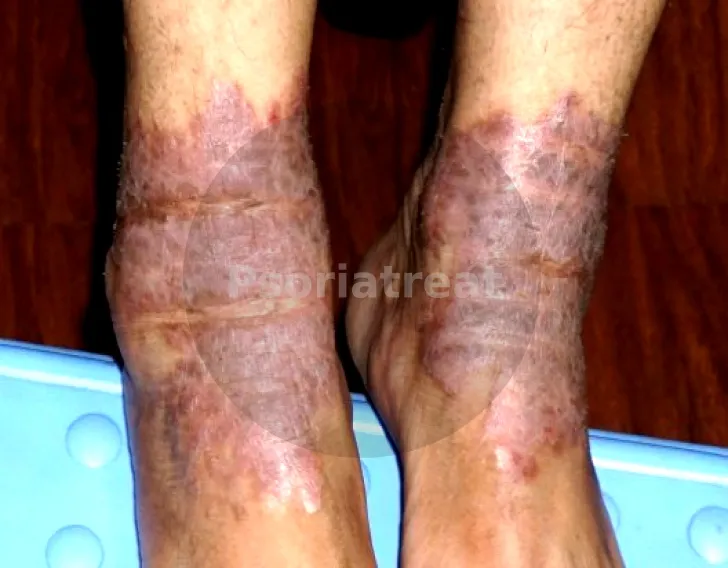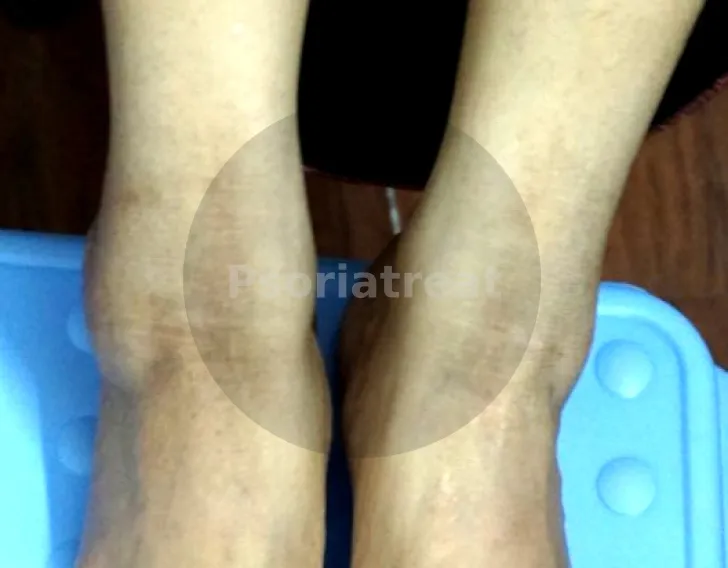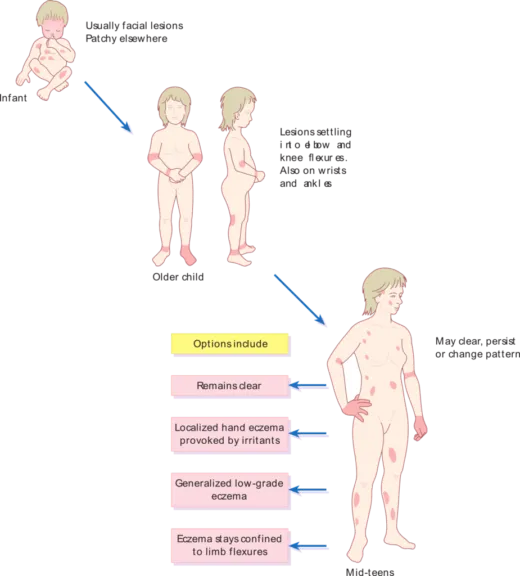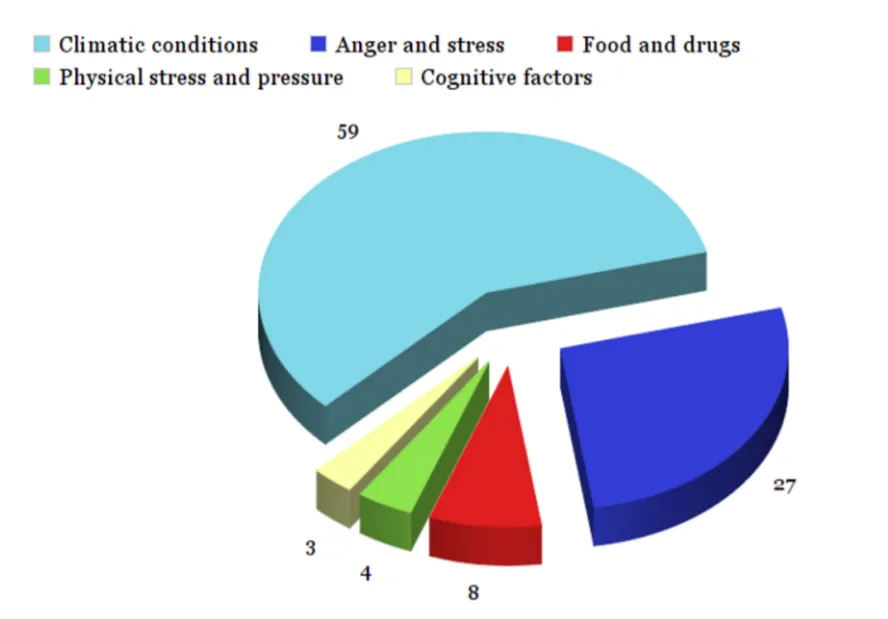Eczema is the chronic inflammation of the skin. We will see Top 5 things about Eczema. It begins as red, raised tiny blisters containing a clear fluid on top of red, elevated plaques. When the blisters break, the affected skin will weep and ooze. In older eczema, the blisters are less prominent and the skin is thickened, elevated and scaling. Eczema almost always is very itchy.


The specific cause of eczema remains unknown, but it is believed to develop due to a combination of genetic and environmental factors. Eczema is not contagious. Children are more likely to develop eczema if a parent has had the condition or another atopic disease like asthma or hay fever. If both parents have an atopic disease, the risk is even greater. Environmental factors are also known to bring out the symptoms of eczema, such as:
Irritants:
These include soaps, detergents, shampoos, disinfectants, juices from fresh fruits, meats, or vegetables.
Allergens:
Dust mites, pets, pollens, mold and dandruff can lead to eczema.
Microbes:
These include bacteria such as Staphylococcus aureus, viruses and certain fungi.
Hot and cold temperatures:
Very hot or cold weather, high and low humidity and perspiration from exercise can bring out eczema.
Foods:
Dairy products, eggs, nuts and seeds, soy products and wheat can cause eczema flare-ups.
Stress:
This is not a direct cause of eczema but can make symptoms worse.
Hormones:
Women can experience increased eczema symptoms at times when their hormone levels are changing, for example during pregnancy and at certain points in the menstrual cycle.
Atopic Dermatitis
The term “atopic” means there is a hereditary tendency to develop eczema, asthma and/or hay fever. This is the most common form of eczema. Atopic dermatitis usually starts during childhood, typically in the first six months of life. Its symptoms include dry, scaly skin, redness, itching. Most often, it affects skin on the face, hands, feet, inner elbows, back of knees . Irritants that can make symptoms of atopic dermatitis worse.
Contact Dermatitis
Eczema occurs when your skin comes into contact with irritants or allergens (called triggers), resulting in redness, inflammation, itchiness and pain. There are two kinds of contact dermatitis ie. irritant and allergic. The common triggers of irritant contact dermatitis are solvents, detergents, paint, pesticides, bleach and fumes. Conversely, allergic dermatitis (also called allergic eczema) can be triggered by topical antibiotics, adhesives, fabrics and poison ivy. Treatments include: Moisturize the skin. Avoiding future contact with the irritant or allergy.
Dyshidrotic Dermatitis
The condition is more common in women. This type of eczema affects the hands and feet. The first symptom may be severe itching. Blisters may then appear, which give way a few weeks later to scaly patches. Sometimes deep cracks can appear on the hands or fingers. The condition is more common in women. This type of eczema may become chronic and painful Treatments include ie. Cool, wet compresses

The conventional eczema treatment is the use of topical corticosteroids, topical calcineurin inhibitors (TCIs) and systemic oral drugs. However, these medications can cause a variety of adverse effects. For instance, corticosteroids (the most popular option), can cause thinning of your skin, inflamed hair follicles, stretch marks and may even worsen a pre-existing skin infection. This is why you should try other alternative ways of treatment like homoeopathy. Homeopathy not only treats the eczema but stops the relapses permanently.
There are numerous things that people with eczema can do to support skin health and alleviate symptoms, such as
Use Moisturizer:
After bathing, apply a heavy, ointment based moisturizer while your skin is still moist. Creams, ointments and lotions seal in moisture. Using petroleum jelly on your baby’s skin may help prevent development of atopic dermatitis.
Try to identify and avoid triggers that worsen the condition:
Things that can worsen the skin reaction include sweat, stress, obesity, soaps, detergents, dust and pollen. Reduce your exposure to your triggers. Infants and children may experience flares from eating certain foods, including eggs, milk, soy and wheat.
Take shorter baths or showers:
Limit your baths and showers to 10 to 15 minutes. And use warm water.

Take a bleach bath:
Dermatologists recommends considering a bleach bath to help prevent flares. A diluted bleach bath decreases bacteria on the skin and related infections. Take a bleach bath no more than twice a week.
Use only gentle soaps:
Choose mild soaps. Deodorant soaps and antibacterial soaps can remove more natural oils and dry your skin.
Dry yourself carefully:
After bathing gently pat your skin dry with a soft towel and apply moisturizer while your skin is still damp.
Wear loose clothing:
Wear cotton and soft fabrics and avoid rough, tight fitting clothes.
Use a humidifier:
Dry air can be stressful for your skin.
Cutting your nails:
Keep fingernails short to prevent scratching.
Use Coconut oil:
This is known for its antibacterial, antifunga, antimicrobial and antioxidant properties. Apply the oil directly on the affected skin a few times daily for instant relief.
Use of aloe vera:
It offers antibacterial, regenerative and antioxidant properties that make it a popular ingredient in skin care products. Extract the gel from a fresh aloe leaf and apply directly to your skin.
Probiotics:
Probiotics Like youghurt, buttermilk, cheddar cheese. Give your immune system a boost . Good bacteria can help soothe inflammation and stimulate the body to produce antibodies and certain white blood cells that are vital for preventing the body from overreacting to allergens from breaking the skin.
Opt for Hypoallergenic Foods:
Hypoallergenic or low allergenicity foods are less likely to trigger allergic reactions. Hypoallergenic fruits and vegetables, such as carrots, apples, pears, squash, cucumbers, kale, Brussels sprouts, celery, lettuce, zucchini, beets, bananas, blueberries, apricots and turnips, are generally considered safe for people with eczema.
Increase your omega-3 intake:
Dry skin is a common sign of omega-3 deficiency and can trigger eczema symptoms. Hence, if your skin is dry, you should try eating more omega-3 rich foods.
